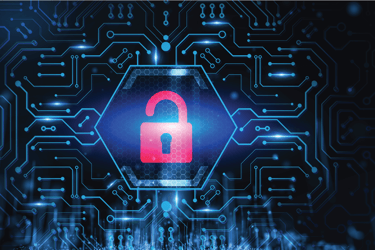
Phishing attacks aren't new, and despite many of us having completed information security awareness training in the corporate world, phishing attacks are still prevalent and have been on the rise. In fact, phishing is still one of the most common tools used to infiltrate your organization.
While hackers can afford to hit or miss, you can’t afford to miss even one attempted breach. A successful data breach could jeopardize everything you’ve worked so hard to build. It’s crucial to stay in the know on how phishing attempts and malware have evolved in recent years and, moreover, how to mitigate this type of risk within your organization.
PHISHING & RANSOMWARE: WHAT EXACTLY IS IT?
Ransomware can paralyze your entire organization. It’s a form of malware that encrypts and locks your files, databases, and applications until you pay the ransom to regain access. It’s often designed to spread across your network and target any critical database and servers. Overall, it’s a growing threat that generates billions of dollars in payments to cybercriminals. And, if your company falls victim, it can inflict significant damage and expenses for your organization, both financially and to your company’s reputation.
Phishing, on the other hand, is the delivery mechanism of choice for ransomware and other malware. It’s so prevalent that you may have even fallen victim to this type of attack yourself. It’s critical for companies to take phishing attacks seriously since they have become more sophisticated, personalized, and geo-targeted in recent years. Overall, phishing attacks can harm your organization by putting your data at risk.
Luckily, despite the prevalence of ransomware and phishing attack attempts, there are some crucial steps that your company can take to keep your data, employees, and customers safe.
3 BEST PRACTICES TO MITIGATE RISK OF PHISHING & OTHER MALWARE INSTALLATION ATTEMPTS
1. TECHNOLOGY & INCIDENT MITIGATION STRATEGIES
First, you should enable your spam filters to block emails from suspicious sources. Spam filters are an initial screening measure to reduce the number of sketchy emails getting through to your employees that may put your company at risk.
It’s also beneficial to install two-factor authentication (2FA) to prevent a hacker’s access where a user’s credentials have been compromised. This measure allows you and your employees to flag any suspicious activity, such as a cybercriminal attempting to log into employee accounts with stolen credentials.
Be sure to keep current with all software updates and security patches. Most security software allows you to push mandatory updates out to employees for completion within a certain timeframe, which enforces updates and patches across your company technologies.
Finally, back up all of your data - and do so regularly! This allows you to maintain access to your organization’s proprietary information and data during any instances of data loss or ransomware attacks. You can also utilize backed-up data as a part of your overall incident mitigation strategy.
2. THE HUMAN FACTOR – BEHAVIORAL CHANGE ADOPTION BY YOUR EMPLOYEES
The technology available today is very powerful and certainly helps mitigate the risk of cyberattacks. However, your entire operation could still be jeopardized if one employee falls victim to a malicious attack. Because of this, the human factor is crucial to maintaining security within your organization. There are a few notable ways to foster your employees’ behavioral change towards a culture of cybersecurity.
Get creative by building a strategy to test employees’ threat awareness. Try sending periodic phishing tests to employees across your organization. Establish a series of emails with content that is relevant and similar enough to authentic emails but send it from an unfamiliar sender address, or send test emails containing obvious spelling errors, or content requesting resetting passwords or submitting other critical information.
For example, early morning or late day emails catch us at a time when we’re not necessarily 100% focused. The content and origin can appear from various senders, and it can be tested in many formats. Try creating versions as corporate emails, external consumer emails, mail server error reports and bounced email notifications, or 2FA authentication emails.
3. ADDITIONAL TRAINING & DEVELOPMENT
Organizations should utilize awareness programs for employees to empower them to maintain an awareness of these threats. Whether built in-house or outsourced, offer employees online simulations and video training with testing and course completion certifications.
You’ll want to provide employees with clear instructions on what to do if they click on a suspicious link or want to report a suspicious email or potential threat. Many email service providers, such as Outlook and Google Mail, offer an option to flag an email as suspicious, which will send a prompt to your security team to investigate. Training your employees to utilize all security measures and protocols is crucial to maintaining security within your organization.
FROM A SECURITY STANDPOINT, WHAT RESOURCES DO YOU NEED?
Some of the key roles to consider for your cybersecurity team include vulnerability and penetration testers, SOC analysts, IAM experts, GRC experts, CISOs, and vCISOs. However, depending on the size of your company and the industry you’re in, it could take some strategic planning to organize your perfect cybersecurity team. Many find it helpful to rely on a reputable third-party vendor to select the right resources to drive results.
Ultimately, you’re working towards creating a culture of cybersecurity in the workplace that will be a key element of your company’s overall mission, vision, and values. In doing so, it’s best to hire SMEs across any key roles that are mission-critical when it comes to implementing and training employees across your organization.


